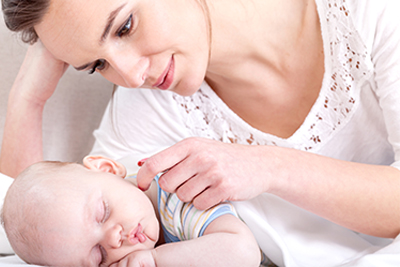Sleeping While Traveling
Plan ahead
Discuss and decide ahead of time where everyone will sleep so that bring what you need and/or the host can prepare the rooms accordingly (bed, crib, pack and play, making the room dark, etc.).
If your child will sleep in a pack and play during your trip, put it up at home before your trip. Let your child play with it during the day, use it for a nap in or even at bedtime. We want them to become familiar with it before they actually have to sleep in it in a new place as part of your baby sleep training.
Bring what you need
Take what you need so that you can recreate as much of your bedtime routine and your home sleep environment. You may also want to bring your baby monitor.
Make sure you bring your child’s lovey, pacifier, white noise, blanket, sleep sack, stuffed animal, pajamas, fitted crib sheet, etc. Don’t wash anything (pajamas, blanket, sheet, etc.) right before you leave for your trip: we want these familiar objects to smell like home, which will be comforting in the new environment.
Help your child get familiar with the new sleep environment
As soon as you arrive at destination (and before it’s time to sleep), spend some time in the room where your child will be sleeping. Play in that room, play in their bed/crib/pack and play, and let them know that this is where they will sleep.
What if they don’t sleep like at home?
If your child has a hard time falling asleep and/or staying asleep because they are in a new environment, they may need some extra baby sleep training support at the beginning. You may want to stay with them in the room at first, offering some reassurance using your voice or your touch. If you have to provide more support than you do at home, let them know that this is special because you are on vacation, and that once you get home, you will go back to the “home expectations”. And do just that as soon as you get home.
The first night you get back home, we have to go back to how we do things at home. That’s really important. If you’ve done things differently on your trip, you can expect him to “test” that, but we need to be very clear about the “sleep rules” at home. Kids are amazing at “compartmentalizing” and understanding that different places/people have different “rules” – for example they behave differently at daycare than at home, or with grandma, etc. What’s important is that as soon as you get back to your home, you use the same sleep rules than you did before the trip.
Schedule
It can be challenging to maintain your child’s regular naptime and bedtime while traveling. Try to find the balance between doing the activities you want to do while on vacation and avoiding that your child gets too overtired and completely melts down, thus not making things fun for anyone. For example, if you know that you will be staying up late one evening, make sure that your child as a good afternoon nap that day. Similarly, if you will be on the go all day, plan to have an early bedtime that night. Follow your child’s lead and adjust your plans accordingly.
Traveling across time zones
If you travel to a new time zone, try to start living as per the new clock as much as possible as soon as you arrive, including meals and snacks, naptime, bedtime, wake time. Expose your child to daylight in the morning and early afternoon. Having said that, it can take a few days to adjust to the new time, so you also want to watch your child: if they are falling apart prior to their schedule as per the clock, follow their lead. People often say that that it takes 1 day of adjustment for every hour of time change. You may want to keep the first day pretty light so your child has the chance to adjust.
